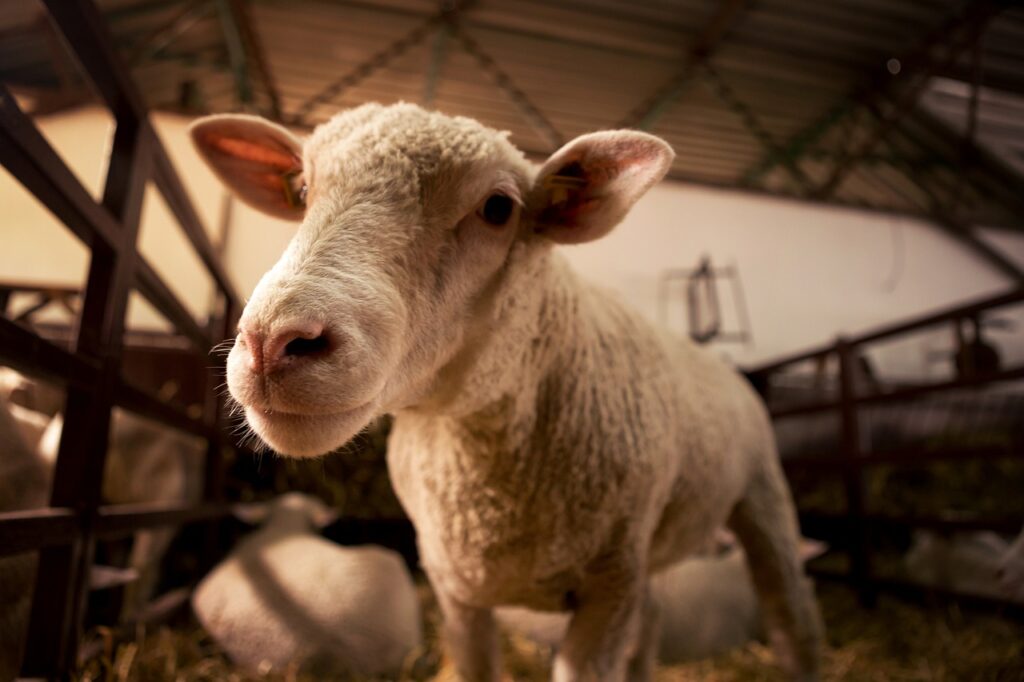It has been said that efficiency is at the heart of every successful farming operation. And when it comes to livestock housing, the structure you choose is just as important as the care you give your animals.
A well-designed shelter not only protects livestock from the elements but also supports their health, comfort, and productivity. For farmers and ranchers who want to raise animals in a smarter, more cost-effective way, steel barns have emerged as the superior solution. With their durability, customizability, and modern design capabilities, steel barns are transforming livestock housing for the better.
The Shift Toward Smarter Animal Housing
Historically, livestock barns were built using timber, stone, or a mix of natural materials. These traditional barns often featured rustic charm and served their purpose, but they were not without flaws. Wooden barns, for instance, are vulnerable to rot, pests, and fire. Their maintenance costs can climb significantly over the years, and their ability to regulate internal conditions—such as temperature, humidity, and airflow—is limited. As the agricultural industry has evolved, so has the need for more resilient and efficient structures. The move to steel barns is a response to this demand, offering a solution that balances durability with design flexibility.
In an era where margins are tight and sustainability is more important than ever, livestock housing must work smarter, not harder. Steel barns represent this evolution by reducing energy usage, enhancing animal health, and simplifying daily operations for farmers.
The Durability of Steel in Agricultural Settings
One of the most important aspects of any livestock housing structure is its ability to withstand time and the elements. Steel is an incredibly durable material that resists wear and tear far more effectively than wood. It doesn’t warp with moisture, it doesn’t attract termites, and it won’t rot or crack over time. In areas prone to extreme weather—be it snow, rain, wind, or heat—steel structures hold up without requiring frequent repairs or replacements.
The longevity of a steel barn means that the investment pays off in the long term. While the upfront cost might be slightly higher in some cases compared to wood, the reduced need for maintenance and repairs ensures that operational costs are significantly lower over the building’s lifetime. This kind of reliability allows farmers to focus more on caring for their animals and managing their business rather than patching up their facilities every season.
Health and Safety is A Priority for Livestock
A barn’s primary function is to keep animals safe and healthy. Steel barns create a cleaner, more controlled environment for livestock, which is especially important for species sensitive to temperature changes or respiratory issues. Since steel does not absorb moisture like wood, it helps prevent the buildup of mold, mildew, and bacteria—elements that can lead to disease outbreaks in confined animal populations.
Moreover, steel barns are far less flammable than their wooden counterparts. Fires are a tragic and all-too-common occurrence in agricultural settings, especially when hay, straw, or electrical systems are involved. The non-combustible nature of steel provides an added layer of security, reducing the risk of devastating barn fires and providing peace of mind for farmers.
Ventilation is another key factor in animal health. Proper airflow helps maintain a consistent internal environment, reduces the risk of heat stress in summer, and prevents the buildup of harmful gases like ammonia. Steel barns can be easily outfitted with ventilation systems, exhaust fans, ridge vents, or even natural openings that ensure fresh air is constantly circulating. This leads to better animal performance, especially in livestock operations where productivity is linked directly to comfort and health.
Customization and Layout Flexibility
One of the standout advantages of steel barns is the ability to fully customize the structure to meet the specific needs of a farm. Unlike traditional barns, which are often constrained by their design and materials, steel buildings are engineered with flexibility in mind. From the layout of stalls to the positioning of feeding areas, every square foot of a steel barn can be planned for efficiency and function.
For cattle operations, wide alleys, feeding troughs, and separate calving areas can be integrated seamlessly. For equine facilities, barns can be designed with individual stalls, tack rooms, wash bays, and even indoor riding arenas. For poultry and pig farms, ventilation systems, temperature controls, and waste management systems can be incorporated into the initial design to ensure optimal conditions from day one.
Customizability also extends to storage needs. Feed, bedding, tools, and equipment can all be stored under the same roof as the animals, reducing the time and labor associated with daily chores. A more efficient layout means that workers spend less time walking between buildings and more time tending to animal care and farm management tasks.
Supporting Efficient Daily Operations
Time is a valuable commodity on any farm. The ability to move livestock quickly and safely, clean efficiently, and maintain feeding and watering systems with minimal effort is essential to keeping operations running smoothly. Steel barns help facilitate these efficiencies through thoughtful design and ease of maintenance.
The interior of a steel barn can be equipped with smooth, non-porous surfaces that are easy to wash down and disinfect. Sloped floors and proper drainage ensure that waste is removed effectively, minimizing odors and reducing the risk of contamination. This not only makes for a more pleasant working environment but also contributes to better animal health and biosecurity.
Feeding systems can be integrated into the barn design, allowing for automated feed delivery, which reduces labor and ensures animals receive consistent nutrition. Similarly, water lines and automated watering systems can be protected within steel walls, ensuring they remain functional in cold weather and reducing the risk of freezing.
In terms of labor, fewer man-hours are required to maintain and operate a steel barn compared to a traditional structure. The design of the barn can be optimized for one-person operations, which is especially helpful for smaller farms or family-run operations. Efficient access points, well-lit interiors, and centralized storage areas reduce daily strain and streamline every part of livestock care.
Climate Control and Insulation
In many parts of the country, farmers deal with temperature extremes that can affect animal performance and survival. Steel barns can be engineered with insulation and ventilation systems that moderate internal conditions year-round. This is especially important for operations involving poultry, swine, or young livestock, where temperature sensitivity is high.
Proper insulation helps maintain a steady temperature inside the barn, protecting animals from extreme heat in the summer and freezing cold in the winter. This consistency improves feed conversion rates and reduces stress-related health issues. Additionally, climate control systems, such as fans, heaters, and air exchangers, can be easily integrated into the structure of the steel barn.
These systems can also help reduce the spread of airborne diseases by filtering and circulating air effectively. With better climate control, farmers have more predictable outcomes in terms of growth rates, reproduction cycles, and overall herd performance.
Energy Efficiency and Cost Savings
Steel barns are inherently more energy-efficient than older wooden barns, especially when insulated properly. The ability to maintain internal temperatures means less reliance on heaters or air conditioners, which significantly cuts energy bills. The inclusion of modern lighting options, like LED fixtures, further reduces electricity usage while improving visibility inside the barn.
In some cases, farmers choose to install solar panels on the roof of their steel barns. The strong, straight surfaces of these buildings make them ideal platforms for solar collection, allowing farms to generate their own power and further reduce dependence on the grid. This not only cuts costs but also aligns with sustainable farming practices and environmental goals.
Long-term savings also stem from lower maintenance costs. Steel barns do not require repainting or sealing like wooden structures. They are less likely to suffer damage from rodents, termites, or woodpeckers, which means fewer repairs and longer service life.
Species-Specific Design Strategies
Each type of livestock has unique requirements when it comes to housing. A well-designed steel barn can be adapted to meet the needs of cattle, horses, pigs, sheep, goats, and poultry.
Cattle require open spaces with sturdy partitions, access to fresh water, and designated feeding and resting zones. For dairy cows, additional milking areas and clean bedding zones are essential. Steel barns allow for these compartments to be integrated while maintaining good airflow and sanitation.
Horses need well-ventilated individual stalls with smooth surfaces to prevent injury, along with space for tack and equipment. Steel barns can accommodate high ceilings and wide aisles, which are ideal for horse housing.
Pig operations demand strict temperature and hygiene control. Farrowing pens, nursery units, and grow-out areas can be arranged efficiently within a steel barn to support the various life stages of swine. The ability to regulate airflow and temperature is crucial in preventing illness and supporting healthy growth.
Poultry, whether layers or broilers, require enclosed environments with controlled lighting and ventilation. Steel barns offer a sanitary, easy-to-clean space that can be equipped with automated feeding, watering, and egg collection systems.
Goats and sheep benefit from dry, well-drained floors, access to outdoor pens, and adequate space for feeding and kidding. Steel barns help maintain a clean and dry environment that prevents hoof problems and supports herd health.
Long-Term Sustainability
Sustainability is no longer optional in modern agriculture. Consumers demand ethically raised animals, lower carbon footprints, and environmentally responsible practices. Steel barns contribute to these goals in several ways.
First, steel is a recyclable material. At the end of its service life, a steel barn can be dismantled, and its materials reused or sold for scrap. This reduces construction waste and promotes circular economy practices.
Second, the energy efficiency of steel barns reduces the carbon emissions associated with heating, cooling, and lighting. By incorporating solar power or other renewable energy systems, farms can further shrink their environmental footprint.
Finally, steel barns allow for better manure management. With proper drainage and collection systems in place, waste can be handled in a way that supports composting or biogas production. This closes the loop between livestock care and land stewardship, turning potential waste into a valuable resource.
A Smarter Future for Livestock Farming
Steel barns are not just an architectural upgrade. They are a fundamental shift in how livestock can be housed and cared for. They represent a more intelligent approach to farming, one that considers animal health, worker efficiency, long-term costs, and environmental impact. With their strength, adaptability, and low maintenance requirements, steel barns are an investment in both the present and the future of agriculture.
For farmers looking to streamline their operations, protect their animals, and build with confidence, steel barns offer a clear path forward. As technology continues to evolve and farming practices become more data-driven, the flexible and resilient nature of steel barns will allow agricultural operations to adapt, expand, and thrive.

